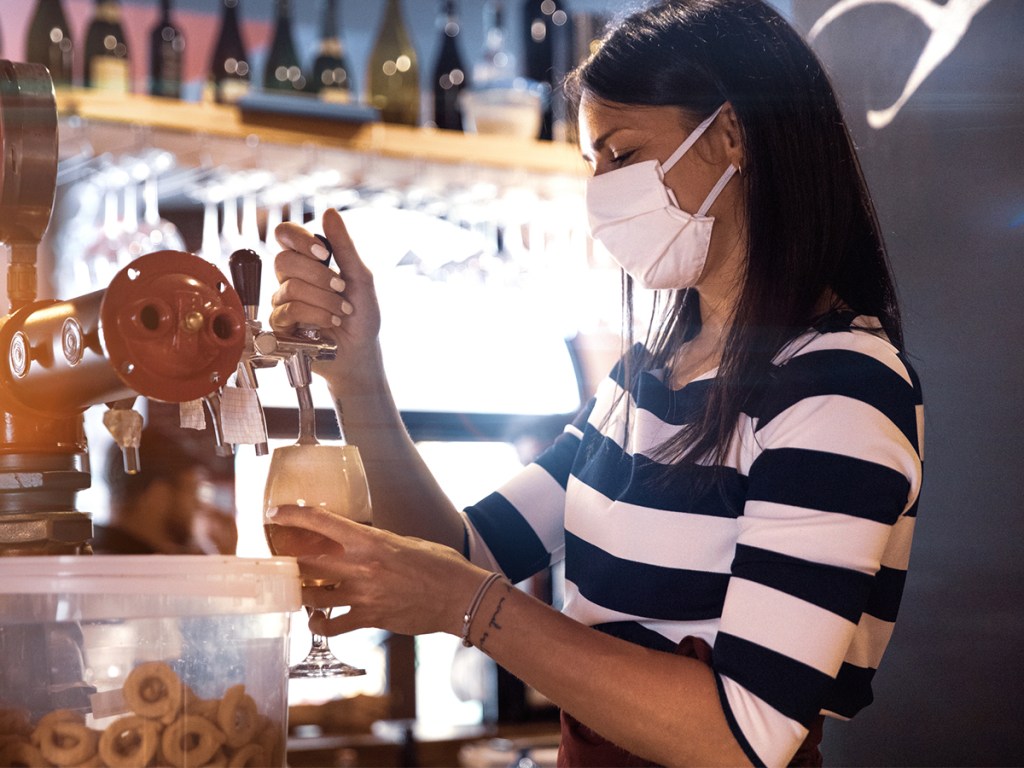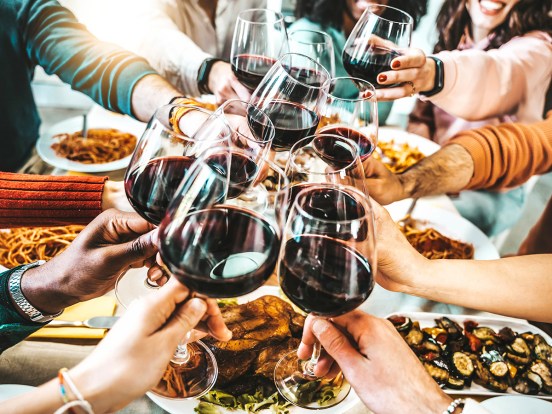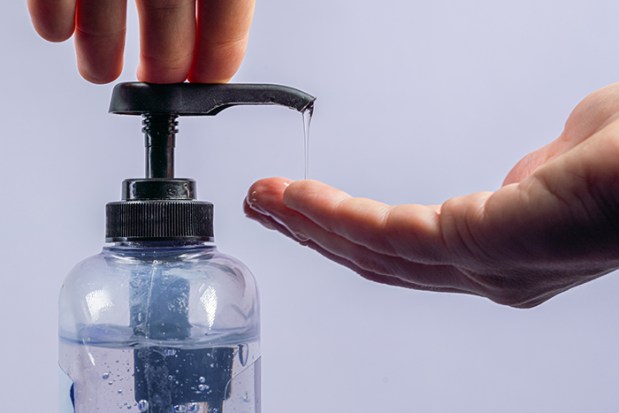Global drinks analysis company the IWSR has released a COVID-19 Impact Snapshot report series, assessing the ongoing impact of the pandemic in 12 key markets…
Australia:
The continued high-level lockdown of Victoria (Melbourne in particular) is impacting the on-trade, given the city’s importance to the sector; however this is to some extent offset by other regions being in a less severe state of lockdown, with locals allowed to drink out of home in a socially-distanced manner. Off-trade sales remain strong – up double-digits in August – with beer, cider, still wine and RTDs driving growth.
The impact of on-trade development is more keenly felt on spirits – trending categories such as gin, which is among the fastest off-trade growth categories, struggle to post overall growth on last year due to the lack of on-trade.
While Stage 4 lockdown – the strictest form of lockdown – has been extended in metropolitan Melbourne until the end of September, there are bright spots even here. As of mid-September, pubs in rural Victoria will be allowed to serve patrons outdoors to a maximum of 50 people and at the regulation 2sqm density. Indoors, outlets can seat a maximum of 10 customers per space with up to two spaces per venue.
China:
China’s lockdown policy has shifted entirely to highly localised measures. Where increased virus caseload is being detected, authorities move quickly and stringently, but for a limited period until the perceived danger is quelled. The most recent example is in Ruili in Yunnan province, on the border with Myanmar, with all residents under a strict stay-home order, a heavy testing programme and complete shielding.
It is this localised monitoring and, if necessary, locking down, that has allowed the rest of the country to return to near-normality in terms of daily life. Daily shopping, bar and restaurant use is essentially back to normal, domestic tourism is doing well, and extensive festivities surrounding Mid-Autumn Festival/Chinese National Day are being planned. While there remains some reluctance on the part of consumers to fully re-engage with the night trade, authorities are keen to assist with promotions and assurances of safety.
The beer spike is now easing as the season turns to autumn, with the traditional summer peak levelling off. Baijiu, Cognac and Scotch have all regained their strength, with only high-energy spirits categories like shooters displaying continuing softness. The first hard seltzers are starting to appear in China. Wine consumption continues to suffer somewhat due to a lack of inbound tourism and some reduced footfall in the upmarket restaurant trade.
Italy:
Cautious optimism was the mood in July and early/mid-August, as Italians returned to the on-trade en masse and many international visitors chose to travel to Italy over the summer. The mood began to shift in late-August, as the country began to see localised increases in infection rates. Open-air venues with dancefloors have since been restricted, and Italians are now required to wear face masks in public spaces that are susceptible to public gatherings, such as in front of bars and cafes, between the hours of 6pm and 6am.
The drinks industry experienced a better August than many had expected, with growth in the Cash and Carry channel, along with growth in retail and ecommerce. Spirits, in particular, enjoyed accelerated sales in August, with flavoured spirits driving growth. Lower-level gin and rum are booming too.
Mexico:
Parts of the country are opening. Mexico City – home to 22m people – ‘reopened’ in mid-August, and residents are now allowed out to visit museums, cinemas and bars for the first time since the end of March.
The reopening of bars is subject to their registering as restaurants, operating at a maximum 30% capacity, and only between the hours of 7am and 10pm. Although this adds complexity for operators, it should help kickstart the on-premise. Meanwhile, other key tourism destinations are reopening too, such as the UNESCO World Heritage site Teotihuacan at the start of September, which should bring in much-needed international visitors.
Looking ahead, the IWSR does not expect a sea change in development, rather, incremental improvements in the on-trade are likely, as more consumers drink out of home and we see continued growth in currently trending categories in the off-trade, such as beer, vodka and RTDs. Ecommerce is expanding rapidly off small levels – key to this is beer, with blended Scotch and agave-based spirits the major growth categories amongst spirits.
South Africa:
Hospitality venues including shebeens were allowed back into operation from 18th August onwards. However, a night-time curfew, restrictions on sizes of gatherings, and an early focus on weekend-only openings, complicate on-premise operations.
Ecommerce is performing strongly, even though delivery can only be made Mondays to Thursdays. Off-premise experienced some bulk buying in late August but has since abated. Beer and wine, also cider and RTDs, are doing particularly well especially in the restricted on-premise. Spirits sales are benefiting from some consumer stockpiling but continue to suffer in the on-premise
The UK:
August proved to be more robust than previous months, with the UK Government’s ‘Eat Out to Help Out’ subsidy scheme helping to keep parts of the UK on-trade afloat. There are calls for an extension or a second iteration of the scheme for the winter season – and even without government assistance, various hospitality operators already run their own private discounting extensions. While not directly supporting the purchase of beverage alcohol, by successfully driving footfall to the UK dining sector, this undoubtedly had a knock-on effect on sales particularly of wine, cider and beer.
The off-trade continues to drive sales, but it has lost some momentum with larger numbers returning to the on-trade. In the off-trade, recent still wine growth is slowing, although the category is expected to perform well overall – it is a key choice amongst consumers for mid-week at-home consumption. Ecommerce also registered continued high growth, albeit not at the same levels as during the start of lockdown.
Some regional restrictions such as reduced hospitality opening times and tighter rules on household mixing are currently in place, and it is widely expected that the UK government will announce stricter, national measures on or around 21st September, following a recent rise in case numbers.
The US:
The past month has seen some slight deceleration of both volume and value in the off-trade, however still higher than the same period last year. At-home consumption continues to drive retail sales. Spirits are leading Covid-19 consumption over beer and wine, while hard seltzers and canned cocktails continue to be the standout categories within RTDs. In the US, RTDs now account for 6% volume share of total beverage alcohol, and IWSR forecasts the category’s volume share to be bigger than that of the entire spirits category in the US over the next five years.
Wine also continues to grow, but greater strides have been made by sparkling wine, particularly ones that consumers perceive to be of higher quality. The recent fires in California have left local wine producers uncertain of their ability to meet grape quality standards due to possible smoke pollution. In the beer category, craft and domestic premium offerings are doing well alongside non-alcoholic beer. A continued can shortage is affecting both beer and RTD inventory.
For more from the IWSR, click here.
Did you know?
There are 6 ways you can catch up with The Shout NZ?
Our print magazine – September issue out now! Subscribe here.
Online, updated daily with its own completely unique content and breaking news.
Our weekly newsletter – free to your inbox! Subscribe here.
Our digital magazines – the latest issues are online now, here and here.
We are also on Facebook and Instagram!





